Impetigo
There are three forms of impetigo:
Ordinary Impetigo is caused by Streptococcal germs. It appears as red sores that rupture quickly, ooze a fluid, and then form a honey-colored crust. It primarily affects children from infancy to age two.
Bulbous Impetigo appears as fluid-filled blisters caused by Staphylococcus germs. This contagious infection is carried by the fluid that oozes from the blisters.
Ecthyma is a more serious form of impetigo that penetrates to the second layer of skin (dermis). It is characterized by sores that are painful and/or fluid or pus-filled. These lesions most commonly appear on the legs or feet. The sores break open and scab with a hard yellow-gray crust. It can also cause swollen lymph glands in the affected area.
Recognizing the importance of prompt treatment, our dermatology providers offer specialized care for impetigo, providing effective solutions to alleviate symptoms and prevent the spread of infection. At Dermatology Associates & Surgery Center, your skin is our priority. If you suspect impetigo, schedule an appointment with a trusted Dermatology Associates & Surgery Center provider for a thorough evaluation and tailored treatment journey to healthy skin.
Examples of Impetigo
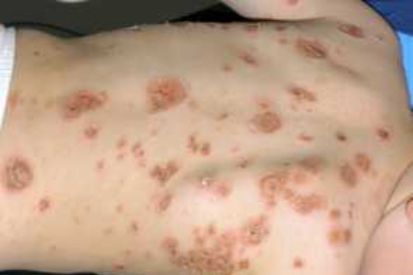

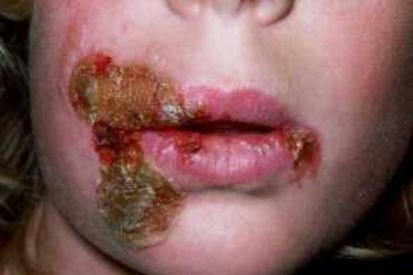
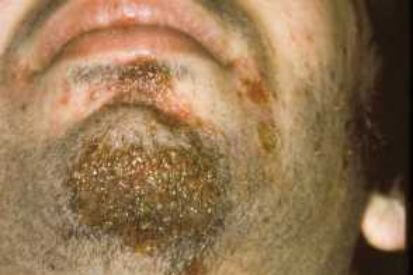
What are the Symptoms of Impetigo?
- Single or multiple blisters filled with pus, which pop easily and leave a reddish, raw-looking base and/or honey-colored crust.
- In most children, impetigo first appears near the nose and then spreads through scratching to other parts of the face, arms, or legs.
- Itchy blisters.
Causes of Impetigo
- Bacteria Staphylococcus aureus or Streptococcus pyogenes.
- Bacteria entering the skin through cuts, scrapes, or existing skin conditions.
- Bacteria exploiting the openings created by insect bites or the warm, moist environment around the nose and mouth.
- Direct contact with the sores or by touching items like towels or clothing that have met the infected skin.
- Warmth and humidity further promote the bacteria's growth, making certain environments more conducive to impetigo transmission.
How to Prevent Impetigo
- Regular Handwashing: Encourage frequent handwashing with soap and water, especially after activities that involve skin contact, playing in shared spaces, or using communal items.
- Prompt Wound Care: Thoroughly clean and cover any cuts, scrapes, or insect bites to prevent bacteria from entering the skin. Immediate attention to minor injuries is crucial
- Avoiding Skin-to-Skin Contact: Minimize direct skin contact with individuals showing signs of impetigo or other contagious skin conditions. Refrain from using personal items like towels or clothing belonging to an infected person.
- Cleanliness in Shared Spaces: Maintain cleanliness in communal spaces, particularly in schools, daycares, and sports facilities. Regular disinfection of surfaces and shared items helps prevent the spread of bacteria.
- Education: Teach individuals to use their own items for personal hygiene to reduce the risk of sharing bacteria. Educate individuals, particularly parents and caregivers, about the symptoms of impetigo and the importance of seeking medical attention promptly for diagnosis and treatment.
Impetigo FAQs
Yes, impetigo sores can be itchy. The red sores may break open, and the itching can be uncomfortable. Dermatologists can recommend treatments to soothe the itch and promote healing.
Impetigo is a contagious skin infection marked by red sores that turn into honey-colored crusts. It often appears around the nose and mouth. If you notice red sores that burst and form a golden crust, it might be impetigo.
With the right treatment, impetigo usually starts to improve within a few days. Dermatologists may recommend antibiotics to clear the infection. It's important to follow their advice for the prescribed duration.
How to Treat Impetigo
Topical antibiotics available over the counter, such as Neosporin, are not recommended for treating impetigo. Our dermatologists prescribe specific formulations tailored to combat the specific bacteria responsible for the infection.
In addition to antibiotic therapy, our team may advise gentle cleansing of the affected areas to remove crusts and promote healing. It is important to refrain from picking at the sores to prevent further spread of the infection.
If you suspect you or a loved one has impetigo, schedule an appointment with one of our dermatology providers today to get a customized treatment plan specific to your needs and begin the journey to healthy skin.
Featured Products for Impetigo
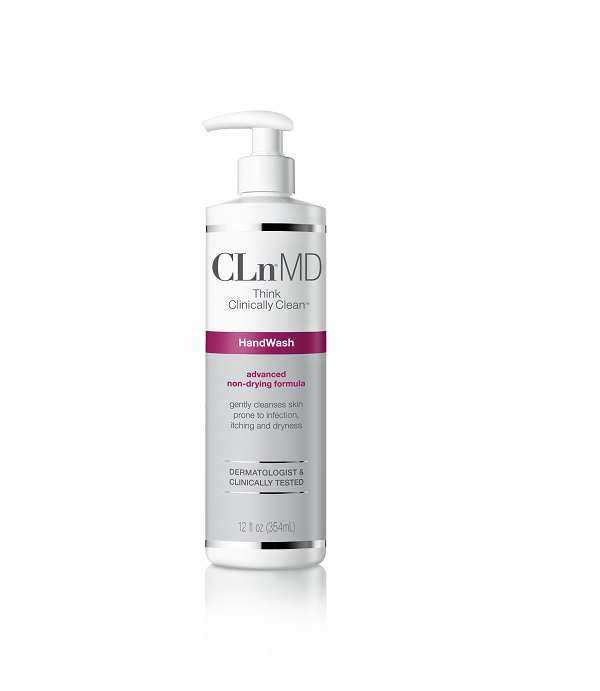
CLn HandWash
Designed by dermatologists, this non-prescription cleanser is tough on microbes but easy on the skin. It can be used for frequent hand washing that can cause sensitive skin to over dry and crack. Openings in the skin lead to increased risk of infection. CLn HandWash is preserved with sodium hypochlorite, but includes glycerin so it can be used daily without irritation or dryin. 12 fl oz
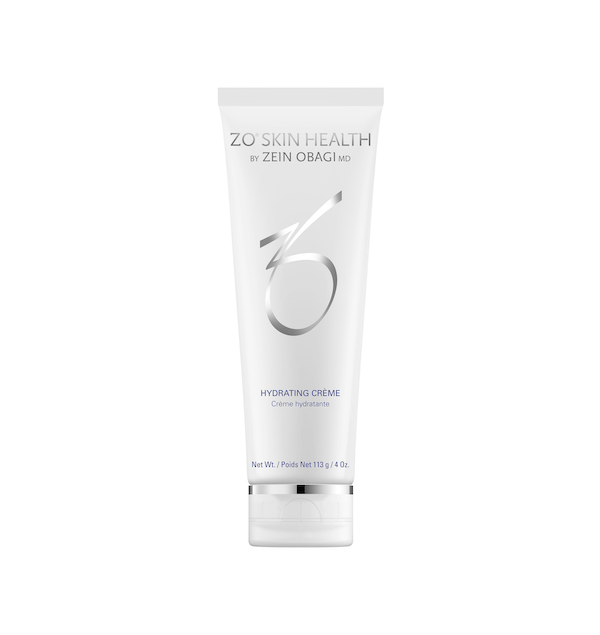
ZO® Hydrating Crème
Temporarily relieves symptoms of severely dry skin while calming skin to soothe visible irritation and replenishing skin's natural moisture to aid in skin recovery. Net Wt. 113 g / 4 Oz.
